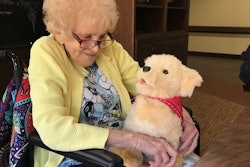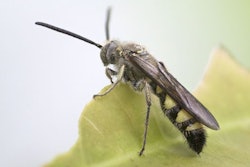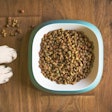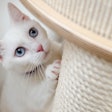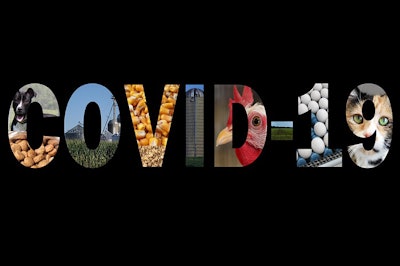
Two African lions, two snow leopards, two jaguars, an Amur tiger and a puma tested positive for SARS-CoV-2, the virus that causes COVID-19, at the St. Louis Zoo in Missouri. Zoo veterinarians expect the eight cats to make a full recovery. Some of the cats developed respiratory symptoms including a cough and runny noses and eyes. A few lost their appetites or reduced their activities, but most of the cats showed no outward signs of the disease. The Zoo hasn’t determined the source of the infection.
Between September 30 and October 26, 2021, all of the cats in the Zoo’s Big Cat Country received a two-dose series of a SARS-CoV-2 vaccine made specifically for animals. However, Zoo officials believe the animals were likely exposed prior to the second dose. Currently, 50 animals at the Zoo have received both vaccine doses, and another 42 have received one dose.
“As in humans, we would expect that full protection against this virus would not be developed until a few weeks after
the second injection in a series,” said Sathya Chinnadurai, DVM, director of animal health at the St. Louis Zoo, “The vaccine, even partial immunization, likely helped our cats be able to mount a stronger immune response, and show fewer signs of illness for a shorter period of time than they would have if not previously vaccinated.”
Low risk of COVID-19 transmission from pets or zoo animals
The St. Louis Zoo requires staff vaccinations and the use of masks around at-risk animals, like the big cats. Zoo visitors face little risk of catching the disease from the cats, since all the cats are outdoors where the potential for spread is low. Likewise, enclosures are separated from the visitors by significant distances, Zoo officials stated in a press release.
“Now more than ever, we recognize that animal health, human health and the health of our environment are interdependent on each other,” Luis Padilla, DVM, vice president of animal collections for the Saint Louis Zoo, said in a press release.
If zoo visitors are not more than six-feet away from a tiger, they have more pressing concerns than COVID-19. Since the early months of the pandemic, there have been scattered cases of dogs, cats and other animals catching the virus from people, including a group of tigers at the Bronx Zoo in April 2020. As of its latest report, published in September, the World Organization for Animal Health (OIE) global list of animal disease outbreaks received reports of the SARS-CoV-2 virus in twelve different animal species (cats, dogs, mink, otter, pet ferrets, lions, tigers, pumas, snow leopards, gorillas, white-tailed deer and amur leopard). Those reports came from thirty countries in the Americas, Africa, Asia and Europe. A total of 584 outbreaks of the coronavirus in animals have occurred.
Biodiversity loss as ultimate cause of COVID-19 pandemic
People do not appear to be catching COVID from pets and wildlife though, excluding a hypothesized initial jump from some other animal to humans. Bats may have been the initial source of the virus, according to scientists writing in the journal Microbiology Australia, although the disease may have passed through an intermediary animal. Genetic evidence, published in Nature, suggests that endangered pangolins may have played a role in the evolution of the SARS-CoV-2 coronavirus, along with bats. Bats can carry coronaviruses, like that which caused the previous SARS and MERS outbreaks.
Ultimately bats aren’t to blame, as biodiversity loss may have created conditions leading to the COVID-19 pandemic, according to scientists writing in Biochemical and Biophysical Research Communications. The researchers argued that the loss of habitat, urban growth and agricultural practices increase the probability of diseases spreading from wildlife to humans. As bats lose their natural homes, they come into closer contact with humans and livestock. Likewise, biological niches harboring pathogens have also been altered, while the viruses themselves have evolved to become more capable of inter-species transmission. This doesn’t mean bats should be persecuted, though, wrote another group of researchers in Biological Conservation. The scientists surveyed people in China following the publication of research that suggested the SARS-CoV-2 coronavirus may have originated in bats. Most survey participants (84%) had misunderstood the connection between bats and the pandemic, while developing more negative attitudes towards the winged mammals. These attitudes may have been behind the increased removal of bats from human structures and legislative proposals to cull bats and other wildlife associated with zoonotic disease.
To counter biodiversity loss and potentially avoid the next pandemic, pet food companies can help bats, pangolin and other wildlife by supporting conservation efforts. The pet food industry can demand sustainability and husbandry standards for livestock and farmed animals to support biosecurity, animal health and ecological stability. Pet owners tend to be animal lovers, and research suggests that pet food label claims about animal welfare appeal to them.
Wildlife conservation’s economic value to humanity became clear in the COVID-19 pandemic. By supporting conservation, pet food brands could show a double layer of support for pet owners by protecting wildlife, while subsequently severing pathways by which diseases pass from exploited wildlife to humans and morph into pandemics.
Well-informed harvesting of resources from wild and semi-agricultural areas can put an economic value on intact, or at least functional, ecosystems and agroforestry systems. Pet food companies could boost their sustainability credibility by sourcing ingredients from these supplies. A pet food brand could go even further by directly working with the communities making a living sustainably from their environments. Similarly, some pet food companies bought farms to produce pet food ingredients or developed relationships with specific, local producers of certain crops. With control over the supply of novel pet food ingredients from ecosystems, brands could ensure food safety, biosecurity, animal welfare and sustainability standards were met.




